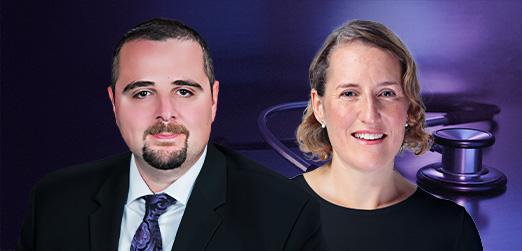Structural Heart Disease
Advancing Patient Care in Hypertrophic Cardiomyopathy
- 0.50
Published:
Learning objectives
- Recall recent trial data for novel disease modifying therapy in HCM
- Describe the evolving guideline directed approach to managing HCM
- Develop an expert-led approach to implementing novel therapy in clinical practice
TAVI – Is Lifetime Patient Management the Alpha to Omega of Contemporary Practice?
- 1.00
Published:
Learning objectives
- Evaluate the factors influencing coronary access in different valve designs
- Formulate strategies to optimise coronary access based on valve characteristics
- Evaluate the role of valve design in reducing pacemaker implantation rates and enhancing future coronary access
- Learn the step-by-step process for achieving optimum implant depth during TAVI
- Apply guidelines and best practices for achieving and confirming optimum implant depth in TAVI procedures
Getting it Right First Time in Severe Aortic Stenosis - Key Insights for Long Term Success
- 1.00
Published:
Learning objectives
- Recall current and predicted trends in TAVI with respect to preserving coronary access
- Consider determining factors for choosing valves in low risk populations
- Discuss solutions for maximising valve durability and haemodynamics and for treating degenerated TAVI
TIO 2023 – Key Issues in TAVI - Live Cases and Discussions
- 1.00
Published:
Learning objectives
- Compare the utility of repair and replacement valve technology in mitral regurgitation
- Individualise valve choice for aortic regurgitation based on valve durability and patient features
- Recall the utility and limitations of specialty balloons
- Evaluate emerging approaches to the treatment of complex left main and other coronary bifurcation lesions
- Discuss the impact of PCI on top of optimal medical therapy in ischaemic left ventricular systolic dysfunction
- Identify suitable patients for interatrial shunting
- Discuss the merits of alternative antiplatelet strategies to DAPT in ACS and CCS following PCI
TIO 2023 – Key Issues in TAVI
- 1.00
Published:
Learning objectives
- Compare the utility of repair and replacement valve technology in mitral regurgitation
- Individualise valve choice for aortic regurgitation based on valve durability and patient features
- Recall the utility and limitations of specialty balloons
- Evaluate emerging approaches to the treatment of complex left main and other coronary bifurcation lesions
- Identify suitable patients for interatrial shunting
- Discuss the merits of alternative antiplatelet strategies to DAPT in ACS and CCS following PCI
TIO 2023 – Symposium: Lifetime Patient Management Greater Expectations: Is TAVI Rising to The Challenge?
- 1.00
Published:
Learning objectives
- Recall the latest data on durability and clinical outcomes for TAVI
- Understand how TAVI is advancing and become aware of future treatment options for lifetime management of patients with aortic valve disease
- Become more confident using TAVI in cases with complex anatomy













